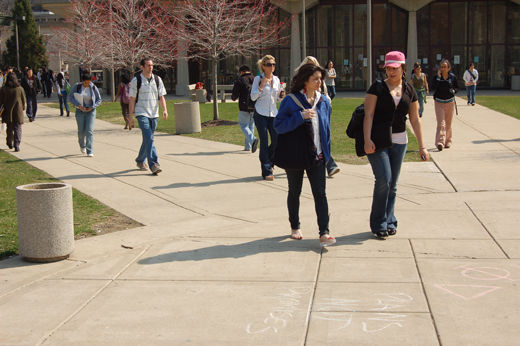
The number of African American and Mexican American students admitted to law schools has decreased in the last 15 years, according to a recent study by a Columbia Law School professor.
During that period overall law schools have added about 3,000 seats for first-year students, yet the total number of Blacks and Mexican Americans entering law school dropped from 4,142 in 1993 to 4,060 in 2008. Such estimates translate into a 7.5 percent and 11.7 percent decrease of African American and Mexican American first-year law students, respectively.
These numbers are troubling says Conrad Johnson, the professor who oversees Columbia Law School’s Lawyering in the Digital Age Clinic. At the same time both groups have improved their college grade-point averages and their Law School Admission Test scores over the years, he notes.
“Even though their scores and grades are improving, and are very close to those of white applicants, African Americans and Mexican Americans are increasingly being shut out of law schools,” he told the New York Times.
It’s like imagining Carnegie Hall, which seats almost 3,000 people, filled to capacity but no Mexican Americans or African Americans allowed in, he added.
The study points out the number of Black and Mexican American students applying to law school has been relatively constant, or growing slightly, for two decades. Yet from 2003 to 2008, 61 percent of Black applicants and 46 percent of Mexican American applicants were denied acceptance at all of the law schools to which they applied, compared with 34 percent of white applicants.
The study also found that the size of law school classes and the number of law schools have increased over the years, which theoretically should have provided more opportunities for qualified minority applicants to obtain a law degree.
The study also suggests that following the 2003 Supreme Court ruling in Grutter v. Bollinger – which said that race can be used as one of many factors in university admissions – law schools have not redesigned their admissions policies to take a more holistic approach.
“What’s happening, as the American population becomes more diverse, is that the lawyer corps and judges are remaining predominantly white,” said John Nussbaumer to the Times.
Nussbaumer is the associate dean of the Thomas M. Cooley Law School’s campus in Auburn Hills, Mich., which is known for enrolling a high percentage of African American students.
It’s concerning that a large percentage of minority applicants are being shut out, he said.
“A big part of it is that many schools base their admissions criteria not on whether students have a reasonable chance of success, but how those L.S.A.T. numbers are going to affect their ranking in the U.S. News & World Report,” said Nussbaumer. “Deans get fired if the rankings drop, so they set their L.S.A.T. requirements very high.”
He continued, “We’re living proof that it doesn’t have to be that way, that those students with slightly lower L.S.A.T. scores can graduate, pass the bar and be terrific lawyers.”
Even if law schools are concerned with their rankings they should address the important issue of promoting diversity as well as affirmative action and equal opportunity policies, critics note. A whole generation could be lost, they add.
The study found that among the 46,500 law school matriculants in the fall of 2008, there were 3,392 African Americans, or 7.3 percent, and 673 Mexican Americans, or 1.4 percent. Among the 43,520 in 1993, there were 3,432 African Americans, or 7.9 percent, and 710 Mexican Americans, or 1.6 percent.
Hispanics, other than Mexicans and Puerto Ricans, have made slight gains over the years.
Johnson says the study focuses on the two groups, African Americans and Mexican Americans, who did not make progress in law school representation during the specified period. The Hispanic/Latino group overall did increase, from 3.1 percent of the matriculants in 1993, to 5.1 percent in 2008, he notes.
The reality of the disparity is unfortunate, particularly since the 2008 L.S.A.T. scores among Mexican Americans were, on average, one point higher than those of all Hispanics together, and one point higher than in 1993.
Johnson said the study was inspired due to growing concerns about the numbers especially after the Gutter v. Bollinger decision. Many people are unaware of the numbers, even among those interested in diversity issues, he said.
“For many African American and Mexican American students, law school is an elusive goal.”
Others say the growing hesitancy among some minorities to embark on a legal career is directly affected by the rising hefty tuition costs. The rising costs, they say, continue to limit minority students from even applying to law school.
The study, “A Disturbing Trend in Law School Diversity” was a collaboration of the Columbia University School of Law and the Society of American Law Teachers. More information about the findings can be found at: http://blogs.law.columbia.edu/salt/. The site offers data as well as best practices law schools can use to create diversity-building admissions policies consistent with the Gutter v. Bollinger ruling.
Photo: PW/Pepe Lozano









